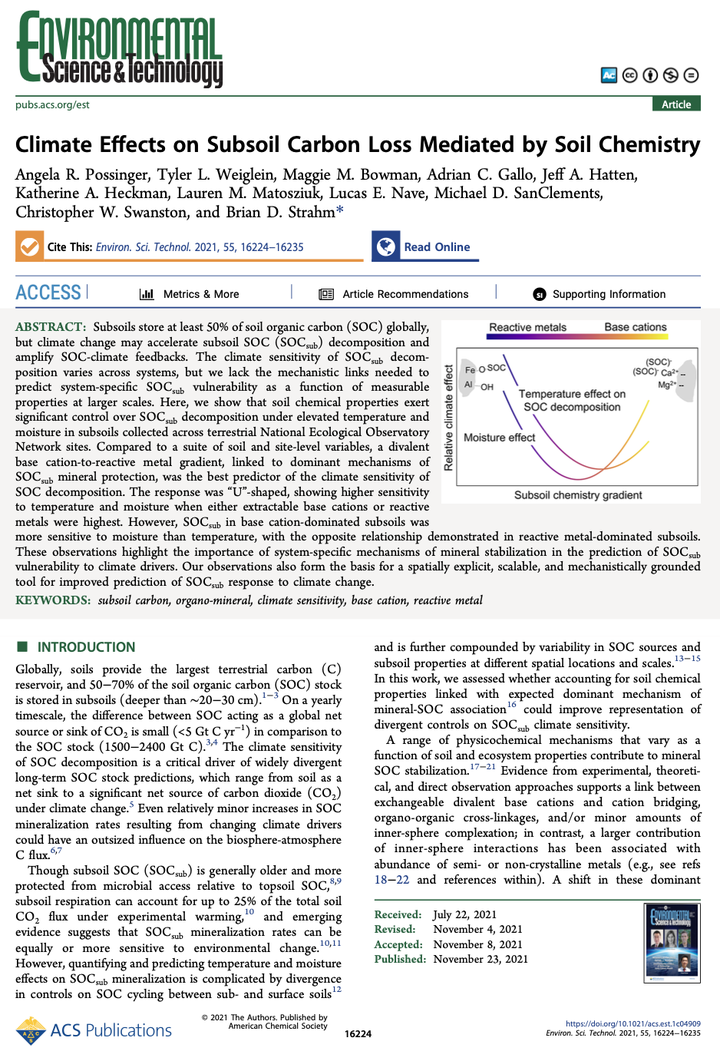Climate Effects on Subsoil Carbon Loss Mediated by Soil Chemistry

Abstract
Subsoils store at least 50% of soil organic carbon (SOC) globally, but climate change may accelerate subsoil SOC (SOCsub) decomposition and amplify SOC-climate feedbacks. The climate sensitivity of SOCsub decomposition varies across systems, but we lack the mechanistic links needed to predict system-specific SOCsub vulnerability as a function of measurable properties at larger scales. Here, we show that soil chemical properties exert significant control over SOCsub decomposition under elevated temperature and moisture in subsoils collected across terrestrial National Ecological Observatory Network sites. Compared to a suite of soil and site-level variables, a divalent base cation-to-reactive metal gradient, linked to dominant mechanisms of SOCsub mineral protection, was the best predictor of the climate sensitivity of SOC decomposition. The response was “U”-shaped, showing higher sensitivity to temperature and moisture when either extractable base cations or reactive metals were highest. However, SOCsub in base cation-dominated subsoils was more sensitive to moisture than temperature, with the opposite relationship demonstrated in reactive metal-dominated subsoils. These observations highlight the importance of system-specific mechanisms of mineral stabilization in the prediction of SOCsub vulnerability to climate drivers. Our observations also form the basis for a spatially explicit, scalable, and mechanistically grounded tool for improved prediction of SOCsub response to climate change.
TLDR
Too many people focus on the upper 10 cm of soil. I understand why, soils are literally hard to dig into. But, subsoils store at least half of all soil organic carbon(!). So if you’re going to study soil carbon, you gotta dig deep.
Here we show that deeper soils (about 20-60cm depths) are not only chemically different than their surface soils (duh) but also that they respond to temperature and moisture changes uniquely. We expect the earth to warm, and precipitations patterns to shift, but if you’re in a forest-like ecosystem (having high iron and aluminum soils) they are more susceptible to deep soil carbon losses compared to grassland-like ecosystems (having higher calcium and magnesium). Yikes.
These year-long incubation data were first explored in (Weiglein 2021). In that paper we focused on differences between A and B horizons to experimental warming and moisture. We explored over 160 different predictors of soil respiration, I recommend reading for a more thorough understanding of how and why surface and subsoils behave differently.